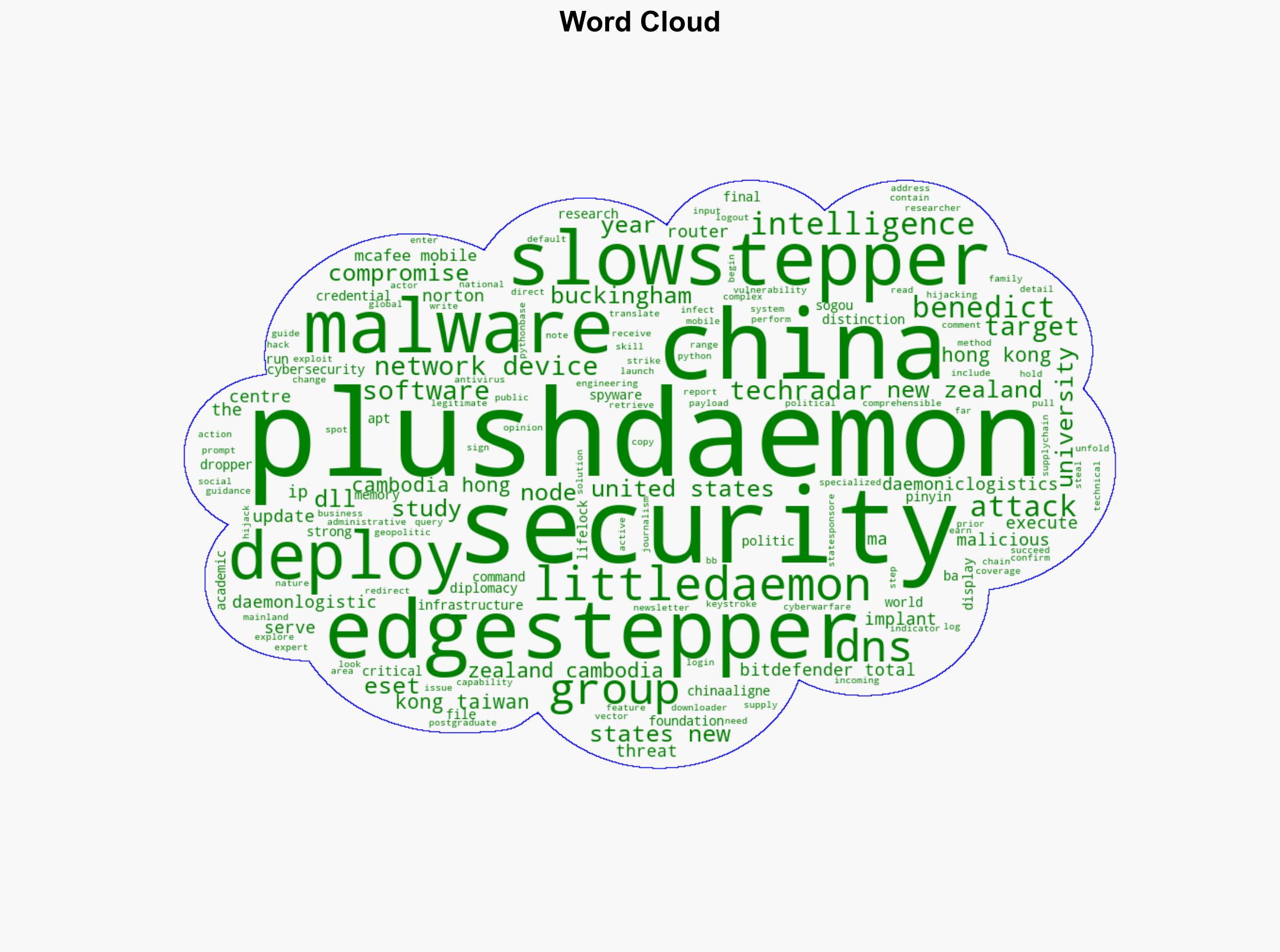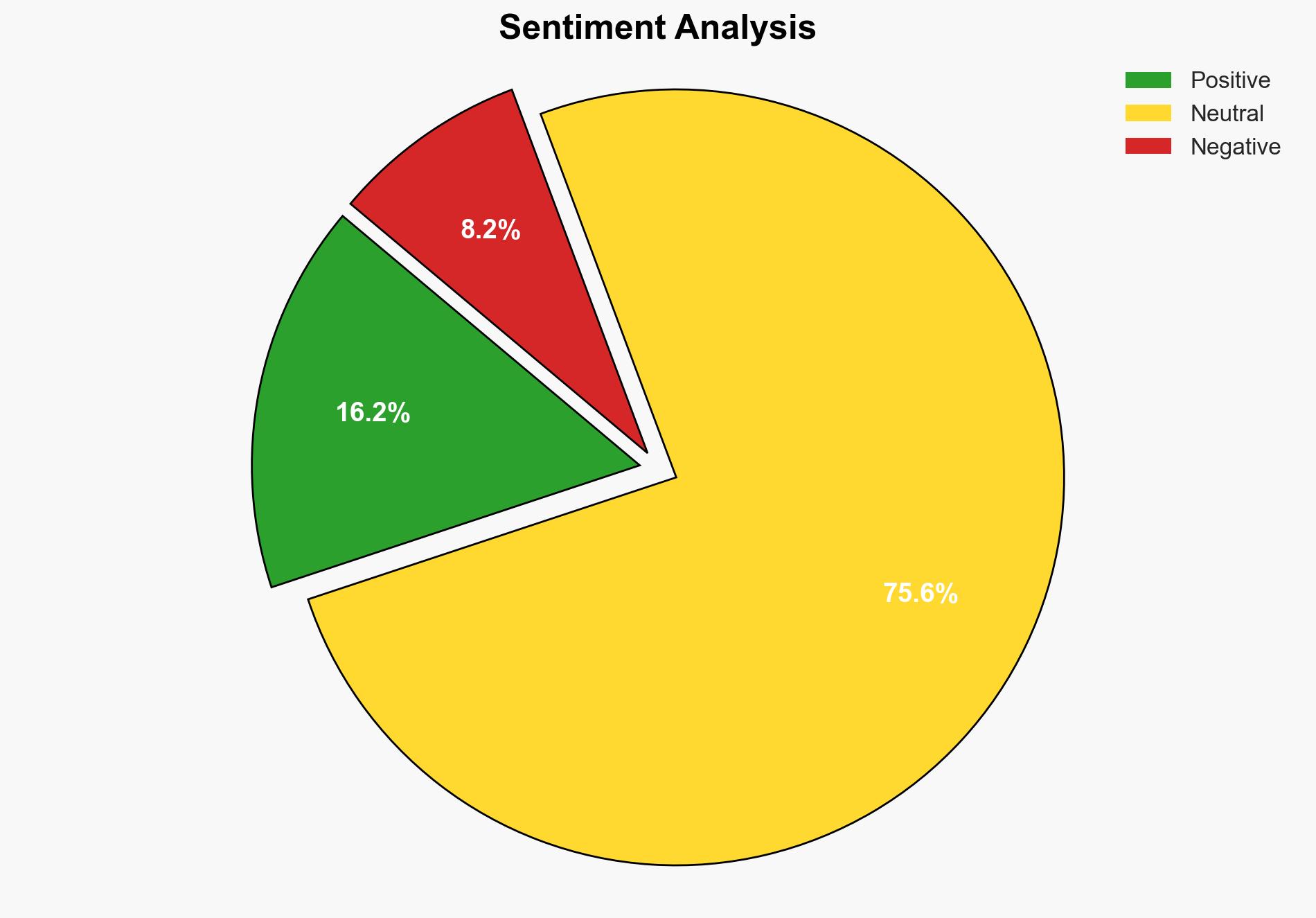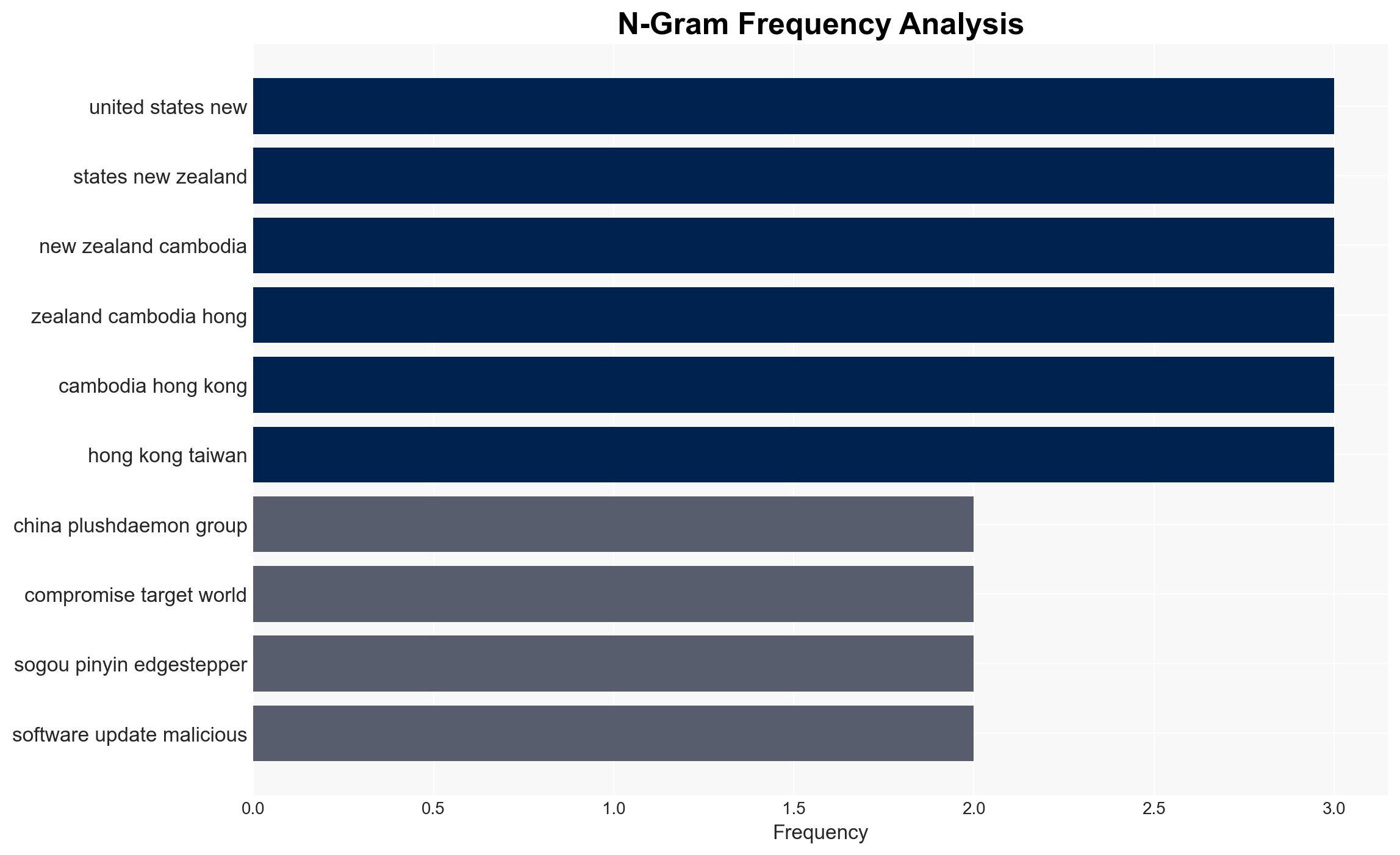Chinas PlushDaemon group uses EdgeStepper implant to infect network devices with SlowStepper malware in global supply-chain attacks – TechRadar
Published on: 2025-11-20
AI-powered OSINT brief from verified open sources. Automated NLP signal extraction with human verification. See our Methodology and Why WorldWideWatchers.
Intelligence Report: China’s PlushDaemon Group Supply-Chain Attacks
1. BLUF (Bottom Line Up Front)
With a moderate confidence level, the most supported hypothesis is that the PlushDaemon group, likely state-aligned, is conducting strategic supply-chain attacks using the EdgeStepper implant to compromise global network devices, including those in critical infrastructure sectors. Recommended actions include enhancing supply chain cybersecurity protocols and international collaboration for threat intelligence sharing.
2. Competing Hypotheses
Hypothesis 1: PlushDaemon is a state-sponsored group conducting strategic cyber operations to gather intelligence and disrupt critical infrastructure globally. This is supported by the sophisticated nature of the attack, targeting of multiple countries, and the use of advanced malware.
Hypothesis 2: PlushDaemon is an independent cybercriminal group focused on financial gain through ransomware and data theft. This hypothesis considers the possibility of financial motives behind the attacks, though less supported by the current evidence of strategic targeting.
Hypothesis 1 is more likely due to the geopolitical spread of targets and the complexity of the malware, which suggests state-level resources and objectives rather than purely financial ones.
3. Key Assumptions and Red Flags
Assumptions: The group is assumed to have state backing due to the sophistication of the attack. The use of supply-chain attacks suggests a strategic objective beyond immediate financial gain.
Red Flags: The potential for misattribution exists, as cyber operations can be masked or falsely attributed. The reliance on open-source intelligence and cybersecurity firm reports may introduce bias.
Deception Indicators: The use of legitimate software update channels for malware distribution could indicate an attempt to obscure the true origin and intent of the attacks.
4. Implications and Strategic Risks
The attacks could lead to significant disruptions in global supply chains, affecting economic stability and national security. Escalation scenarios include retaliatory cyber operations by affected nations, increased geopolitical tensions, and potential impacts on international trade. The compromise of critical infrastructure could also lead to public safety risks and loss of trust in digital systems.
5. Recommendations and Outlook
- Enhance cybersecurity measures across supply chains, focusing on software update mechanisms and network device security.
- Foster international collaboration for threat intelligence sharing and coordinated responses to cyber threats.
- Best-case scenario: Improved global cybersecurity standards and cooperation lead to reduced impact of such attacks.
- Worst-case scenario: Escalation of cyber conflicts and significant disruptions in global supply chains and critical infrastructure.
- Most-likely scenario: Continued cyber operations by state-aligned groups with periodic disruptions and increased cybersecurity measures in response.
6. Key Individuals and Entities
No specific individuals are identified in the report. The key entity is the PlushDaemon group, potentially state-aligned, conducting these cyber operations.
7. Thematic Tags
Cybersecurity, State-sponsored Cyber Operations, Supply Chain Attacks, Critical Infrastructure, Geopolitical Tensions
Structured Analytic Techniques Applied
- Adversarial Threat Simulation: Model and simulate actions of cyber adversaries to anticipate vulnerabilities and improve resilience.
- Indicators Development: Detect and monitor behavioral or technical anomalies across systems for early threat detection.
- Bayesian Scenario Modeling: Quantify uncertainty and predict cyberattack pathways using probabilistic inference.
- Network Influence Mapping: Map influence relationships to assess actor impact.
Explore more:
Cybersecurity Briefs ·
Daily Summary ·
Support us





